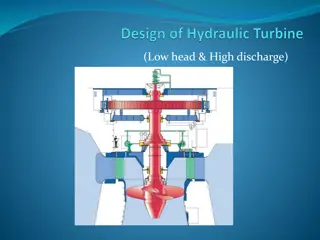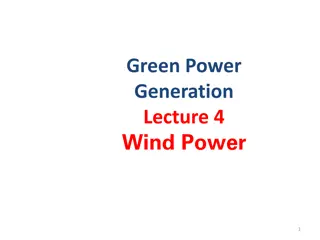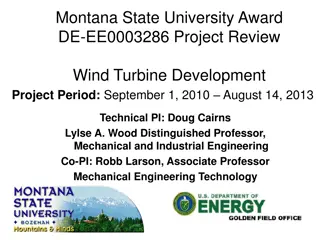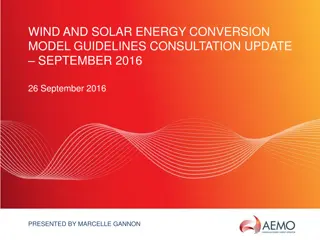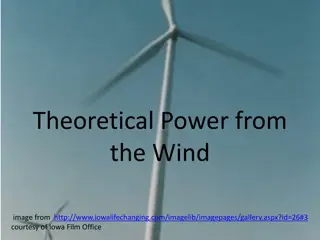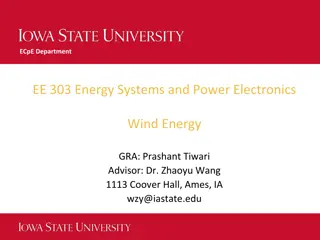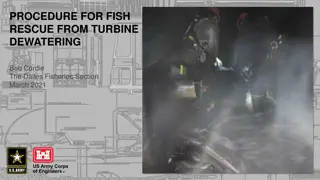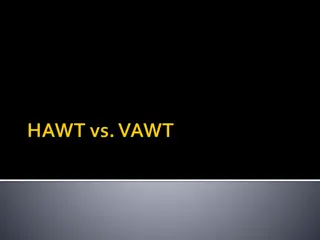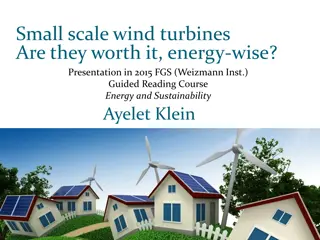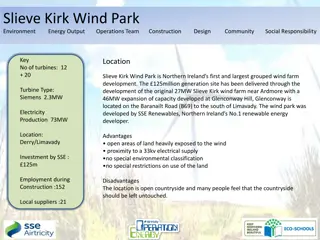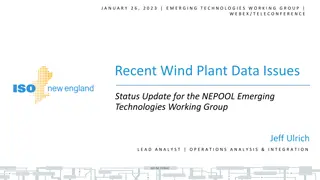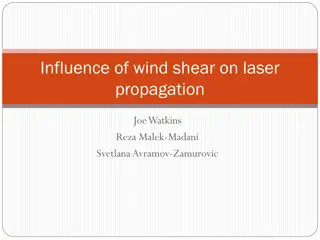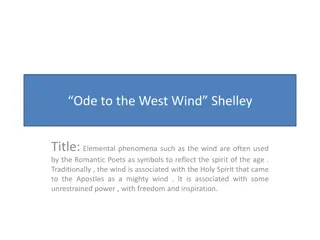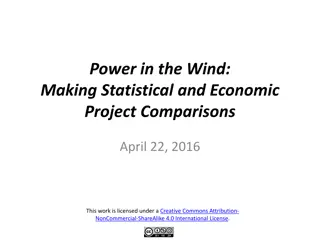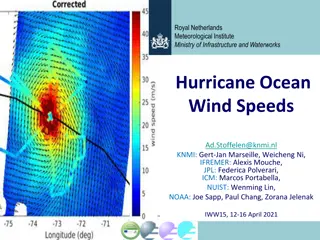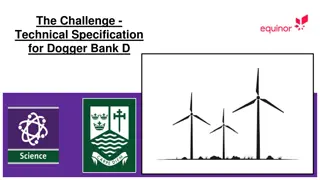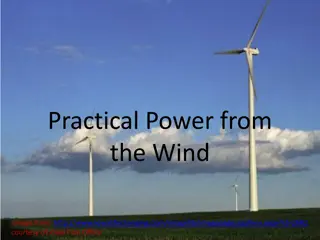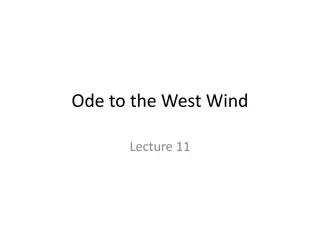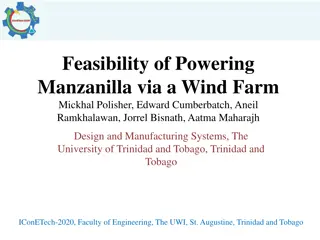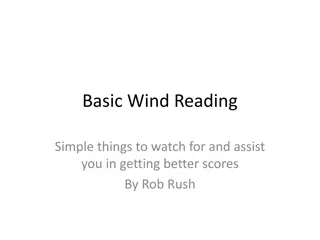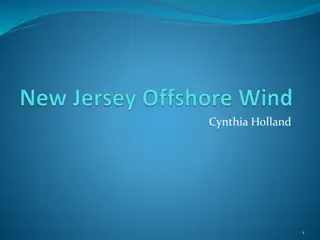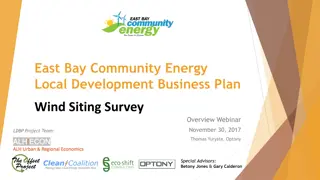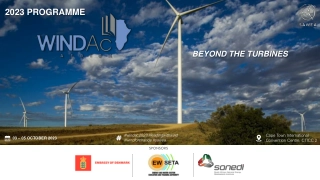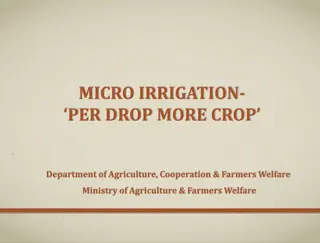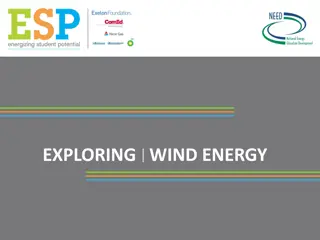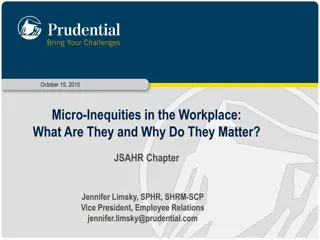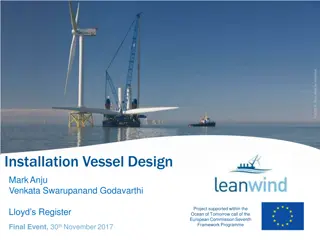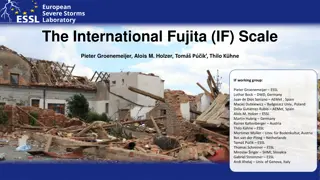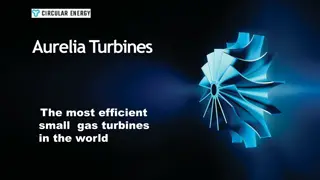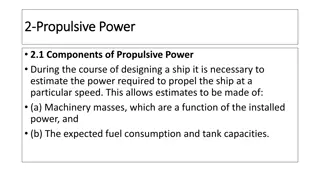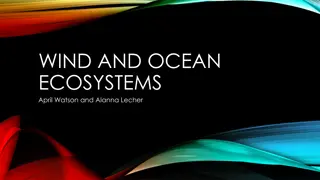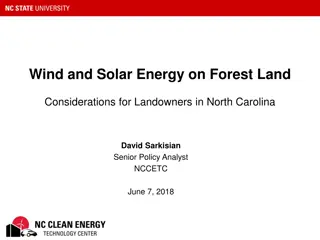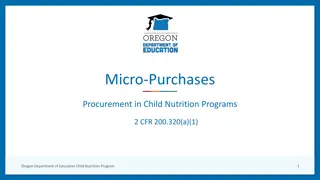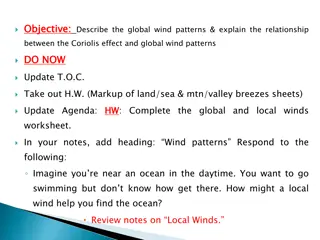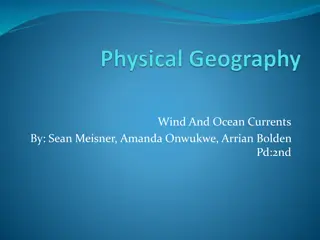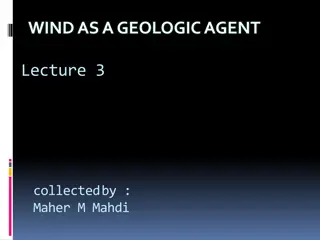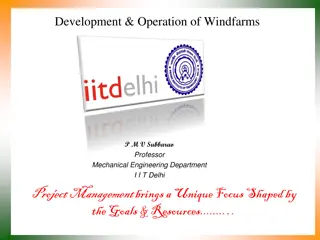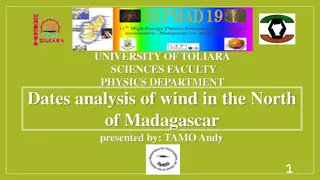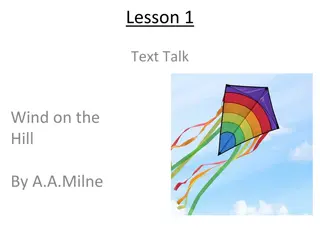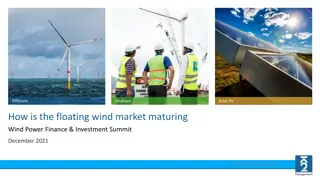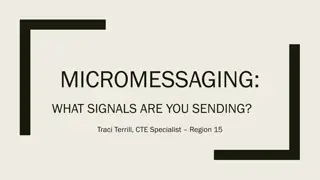Challenges and Developments in Micro Wind Turbine Standards
In the context of the International Standards Assessment Forum (ISAF) and IEC 61400-2, challenges in wind turbine standards development, such as incorrect wind characterization and simplification of load methods, were discussed. Participants from various countries contributed to proposing new standards for micro wind turbines, focusing on size, testing, and safety aspects to enhance market access and innovation.
Download Presentation

Please find below an Image/Link to download the presentation.
The content on the website is provided AS IS for your information and personal use only. It may not be sold, licensed, or shared on other websites without obtaining consent from the author. Download presentation by click this link. If you encounter any issues during the download, it is possible that the publisher has removed the file from their server.
E N D
Presentation Transcript
International Standards Assessment Forum (ISAF) IEA Wind TCP Task 41 Work Package #1 Standards Development 26-28 June 2019 Dundalk, Ireland
IEC 61400-2 Challenges Incorrect characterization of wind, vertical wind speed, normal turbulence model, turbulence intensity of typical sites Duration test impedes market access and innovation Power performance test results give highly optimistic production estimates Simplified Load Method (SLM) isn t linked with turbulence intensity and doesn t have a fatigue load case. No fatigue load cases that cover known anecdotal failures, blade/rotor Lack of clarity on how to use IEC 61400-13 No VAWT specific SLM, requiring the use of aeroelastic models for typically very small turbines Turbine/tower dynamics and interactions Complications of requirements based on turbine sizes
ISAF Participants Mauro Peppoloni Austria, University of Applied Sciences Technikum Wien Tonny Brink Denmark, Nordic Folkecenter for Renewable Energy Immanuel Dorn and Sudheesh Sureshkumar Germany, Enbreeze Raymond Byrne and Paul MacArtain Ireland, Dundalk Institute of Technology Seokwoo Kim - Republic of Korea, Korea Institute of Energy Technology Evaluation and Planning Ignacio Cruz - Spain, CIEMAT Chunto Tso and Chung-Chun Hsu (Wallace) Taiwan, Taiwan Institute of Economic Research Jeroen van Dam, Robert Preus - U.S., National Renewable Energy Laboratory Trudy Forsyth U.S., Wind Advisors Team
Proposed size: Micro Wind Less than 3-5 m2or 800W 2 kW Battery charging only Owner installed Simplified Loads or see if assume 300 Nm covers it? Validation using Primus, other micro turbines? Allow no mechanical brake No site calibration required Get rid of 2-4D upwind anemometer placement, replace with a specific distance Develop another way to define anno placement for very small rotors Don t test past peak power No tonality, emissions map Demonstrate power and RPM control Test blades and rotor/hub simplified methods Can be done in parallel as other tests at different site If no strength analyses (stress analysis and loads) do a longer duration with high winds - 9 months? If loads done, reduced duration test - 3 months? Develop technical baseline of duration test time, OTF, high wind speed time periods to inform standard changes. May not make sense without tower Turbine design class has no relevance Develop one design class for microwind Is simpler, more cost effective method that is better than certification? Size: Electrical output: Installation: Loads: Power curve Testing: Acoustic Testing: Safety and Function Testing: Blade Testing: Duration Testing: Dynamics: Design Class per IEC 61400-2 Other:
Proposed Size: Small Wind 40 or 50m2and less or 2-10/11 kW at peak power or AEP? Grid connected or battery charging (isolated/islanded grid) Independent or OEM installers VAWTs develop SLM building on Task 27 Decide if there could be a simpler approach using pre-defined load of 300 Nm SLM or aeroelastic loads? Use existing SWT SLM work and develop aeroelastic models to validate the method used. If use aeroelastic model, reduce duration test or blade tests Need to develop fatigue load cases that account for gyroscopic loads Develop family of curves (at least two bounding conditions, one with high turbulence intensity data or invalid sector data, one with valid sector data only capacity factor No site calibration required No tonality Static Fatigue could be option and trade off some duration requirements, lower FoS (aeroelastic model) or SLM with higher FoS Compare and contrast aeroelastic model results, SLM methods. Gather duration test data and evaluate problems across the total test time. Need to define centrifugal loads test Consider reduced high wind speed requirements based on exploration of existing data. Get data on turbine failure as a function of duration test Need to understand eigenfrequency of tower (work led by Austria) Is simpler requirement better than certification? Labeling requirement? Size: Electrical Output: Installation: Loads: Power Curve Testing: Acoustic Testing: Blade Testing: Duration Testing: Dynamics: Other:
Proposed size: Small, big Wind 40 50m2or 10-100 kW or 10-125 kW or 10-150 kW? Grid connected Professional installers No SLM Use aeroelastic models for all loads Develop clear way of validating aeroelasticmodels Develop fatigue case to cover gyroscopic loads Reduced -13 loads test? Develop recommendations for focusing loads requirements found in IEC 61400-13 Develop comparison of aeroelastic models to measurements found (Endurance, NW 100, Norventos?) Can power curve be used to reduced loads test requirements? Develop family of curves (at least two bounding high turbulence intensity data, capacity factor Can power curve be used to validate loads models? Static and fatigue test IEC 61400-11 with SWT Annex, no tonality Should at least tower loads data be gathered? Not required Develop method for dynamic analyses validated with specific data (Austria) Consider reducing to 2-3 classes based on Task 27 preliminary results Certification and testing required Size: Electrical Output: Installation: Loads: Power Curve Testing: Blade Testing: Acoustics Testing: Loads Testing: Duration Testing: Dynamics: Design Class: Other:
Duration Testing Goal Broad way of assessing short-term reliability and catching liability issue. Maximize the benefit of duration testing by streamlining requirements based on existing data Problem Long-time (6 months) period and a need for simpler procedure High wind speed requirements (Based on design class)(Averaging rate of 10-minutes aggravates the high wind speeds needed.) Doesn t commonly link to policies , for example in Denmark Doesn t always reflect challenging environmental conditions found globally Research needs Analyze duration datasets Brent S./SWCC, NREL, TUV NEL, CIEMAT? WindTest, DNV/GL, IECRE Test Laboratory stakeholder group identify expenses and value added Based on data did the SWT work well with the first hour of high winds or 25 hours or after 25 hour Get data from generator about failure Mariah made it through duration test at Windward but failed shortly after completion of the turbine - example of turbines that made it through but failed. Do we want to increase requirements that would impact the good turbines.
Duration Testing Research needs (continued) Bases on existing data, is there a reasonable approach to reducing duration time period? (particularly for micro - 3 months instead of 6 months?) Where do they fail? What made them fail? Not much public information High winds? Duration time Is there a conservative way to extrapolate to meet high wind requirements? Is there technical rationale to change the averaging time 1-min versus 10-min? How to get data on turbine failure as a function of duration test? Set baseline for off-grid duration research and testing. What are the design implications of new duration test requirements? Phased certification, safety and function, power performance and acoustics to get a limited certification, then complete duration test. Do high wind speed requirements implay a need to demonstrate control? Gather more test data at high turbulent sites such as Beech Mountain,, simple test with kkWh meter and nearby anemometer Need experience with expanded and challenging environmental conditions such as dust, erosion of blades, salt water, icing, etc Task 41 partners Test laboratories and certification bodies Spain CIEMAT data may be available, need to check with OEM and conduct site assessment U.S. SWCC U.K. TUV-NEL Manufacturers Endurance no longer commercially available Enbreeze new turbine designer
Power Performance Testing Goal Develop comparable results on the power produced by wind turbines. Provide a baseline for estimating annual energy production Provide a baseline for organizing data for acoustic testing Leveraging existing IEC 61400-12-1 as baseline and drafting unique requirements for distributed wind turbines Problem Current certified power curves are measured in areas where wind blockages are minimized, which is typical of accredited and formal unaccredited test sites. And while this helps create comparable results for different wind turbines, it implies that consumers should see annual energy production found in unobstructed sites No real measured results showing range of turbine production and performance Current testing requires expensive instrumentation such as calibrated anemometers Research needs Results should include high turbulent results found for alpha of 0.2 An easy approach is to analyze existing data sets for data in invalid sectors How would invalid sector data influence the load spectrum? Analyze the effects of different averaging periods using existing data Develop a high and low turbulence intensity power curve showing a range in rating and annual energy production (city high TI, country low TI) Explore possibilities to reduce stringency for site calibration (likely a function of turbine size) Evaluate cost effective instrumentation and measurement strategies Task 41 partners - test laboratories and certification bodies Denmark, Nordic Folkecenter Republic of Korea, KIER Spain, CIEMAT data may be available, need to check with OEM & conduct site assessment U.S., SWCC Manufacturers Endurance no longer commercially available Enbreeze new turbine designer
Acoustic Testing Goal Develop comparable results on the sound produced by wind turbines. Provide an emissions map per IEC 61400-11, SWT annex, a visual approach to wind turbine sound as a function of distance; something easy for consumers. Provide a baseline for organizing data for acoustic testing Problem Should acoustics testing be done for off-grid Per the IEC standard, sometimes the turbine noise is unmeasurable over the background noise. How can this be handled in a more quantifiable way? There is a high amount of data collected, is there a way to reduce the data required? Research needed Any research conducted on new methods developed should be done for all sizes (micro, small, small/big) Provide a baseline for organizing data for acoustic testing If don t hear a specific tone, don t need to do tonality test. When have their been tonality tests required? Methods needed to handle high background noise What is low enough level of background noise? Turbines can t be heard over background noise okay Exception if background noise was below XX In Denmark, flowing from the large wind industry there is a new requirement on Infrasound for distributed wind
SLM Fatigue, Factor of Safety and Yaw Rate Problem Build SLM fatigue load case to overcome the weakest part of the -2 Very high factors of safety leading turbines to be heavier and more expensive Yaw rate requirements, while seen on free yaw turbines, are restrictively high for other designs Research needed Fatigue Needs to be different for different turbine control methods Low loads for pitching, active yaw turbines Higher loads for passive control and passive yaw Running off yaw Yaw rates Needs to be different for upwind/downwind Does SNL have coupon testing of materials used in today s SWT blades? Focus on SWT likely to be commercial in the future Get blade sets commercially Well behaved turbines have yaw and RPM control Need to design passive yaw into FAST model
SLM Fatigue, Factor of Safety and Yaw Rate (cont.) Develop models first then test HAWC or FAST validation What are the limits of aeroelastic models? What FoS can provide justification? Go with loads Extreme Direction Change Check with DTU, NREL, CIEMAT on once/ 50 year extreme direction data (DTU 3rd December 1999 vey high winds) Partners - Turbine models with validated measurement Bergey 15kW (upwind, passive yaw, tail) at several different sites Turbulence on performance Fatigue cycles Yaw rate Skystream Aeroelastic model Measurements Future common small wind turbine testing? Enbreeze, active yaw install several turbines Huaying? Technical partners Murdoch University DTU University of Newcastle thesis University of Calgary
Tower Dynamics and Interactions Problem Need to avoid resonance above 30% nominal power and RPM for 1p or all frequencies? Want to be overcritical versus undercritical Eigenfrequency of tower is more critical Research needed Define framework and which natural frequencies make sense Include NREL FAST update to include towers Suggest identifying different requirements since don t currently require certification Survivability at different WS Icing or other states that are easy to reach within one year at a test site Task 41 partners Austria, Fachoschule Teknikum Vienna
FAST model Problem Need to develop aeroelastic modeling capabilities since will be basis for certifying small and small, big wind turbines Research needed Improve capabilities Model lattice towers Turbine dynamics of yawing and tower resonance Reflect controls found in modern wind turbines
Normal Turbulence Model Run the proposed NTM through aeroelastic code Jeff Minnema Using Bergey (15 kW) model AIR Breeze (1 kW) Enbreeze turbine (15 kW) Skystream turbine (2.5 kW) Run through structural analyses Compress the design load cases to either 1 or 2 cases based on aeroelastic modeling exercise Is a low wind, high turbulence site impactful? TI should be included in SLM fatigue analyses
VAWT Simplified Loads Methodology Problem No loads method or simplified loads methodology for VAWTs. This requires Loads testing to meet certification requirements. VAWT manufacturers are dominantly in Asia, highlighting the need for a standards assessment forum or discussion in Asia Research needed Develop simplified loads methodology (SLM) for VAWTs Build on work done under Task 27 Discussion of VAWTs with experts on Annex or separate VAWT standard? Upper limit for VAWTs maybe 100? kW or lower should there be a hard limit? Task 41 partner Taiwan Institute of Economic Research Japan?
Future actions Look at comparison of RSA, kW, specific power, or AEP to set size boundaries Comparing loads using SLM, and aeroelastic models What load cases matter? Fatigue implications if using SLM, not robust enough (may depend on configuration) Factor of Safety Get input from OEMs? predetermined loads Endurance measurements exceeded aeroelastic model loads Davide Conti s data Viking Murdoch University Dr. Jonathan Whale Samuel Evans Newcastle University Skystream thesis David Wood gust data Consider fatigue analysis of gyroscopic loads for: yaw bearing (passive yaw), yaw error (active yaw), power production and fault, normal shutdown, parked (low cycle/high fatigue), different fatigue for on and off- grid turbines. Extensive modeling with field testing Look at power curve data as a function of TI How to evaluate invalid sector data? What is the right averaging period? (1-min, 1-sec, 10-sec, 10-min, etc.) KIER data - better with lower averaging period What gets close to accurate AEP? Will shorter averages be better?
Future actions (cont.) Assess whether blade fatigue testing adds value Manufacturing defects or design defects? Gather fatigue blade test results turbines that fail in the field and we don t fail them in the lab OR turbines that fail in the lab but don t fail in the field. Rotor test for fatigue Taiwan get SLM VAWT write up could be separate annex -2 or its own document without size limits? Need research? Where is the cost versus value of testing? Measurement equipment? Theis anno? Loads testing -13 requirement is less appropriate the smaller the turbine is Data from NW100 Norventos Endurance someone else trying this not Dean/Dave Windward Engineering analysis compared to measurements Could have data from 100 kW turbine from Korea Capture matrix for stall control turbines are almost the same for duration test Could have data from Denmark for 168 m2 VAWT
Future actions (cont.) Query certification costs and schedule to meet -1 versus -2. Check with Endurance, NW100, Norvento?, C&F?, XANT, data and aeroelastic models NPS had to add fatigue test of blades per the certification body. Develop SLM for downwind turbines, put in annex Yaw rate - get data, need high turbulence site (Tonny, Jeroen?, Beech mountain turbine already installed and easy to measure?)
Other Ideas Blade test identify a large variety of blades and test to failure Talk with owners, how are they performing, if not failed Reliability database labor intensive to develop comparable results NY pilot project Or query turbine consumers? Turbines in northern Ireland medium, new and refurbished citizen scientist app (done in water program)
Compliance to IEC 61400-13 Goal Develop strategies and methods to get minimum loads to validate aeroelastic models. Problem Limited information on how to handle IEC 61400-13, how should it be used? Not needed for micro and small unless it is a VAWT configuration Aeroelastic models need some sort of measurement to refine the model Research needed Small, big not allowing SLM, aeroelastic models required limited loads test? Tower dynamics Active yaw and pitch don t require loads? Can we model the aeroelastic model and validate with PP and limited loads (tower loads, avoid loads on rotating frame)? Can tune aeroelastic models based on measurements? Can t model accurately if free yaw with tower resonance? Add mass to lower frequency?
Next Steps Hold a more detailed meeting in US. hosted at NREL? Build on half day meeting held in conjunction with DWEA conference Target key stakeholders for detailed discussion Send out WP1 International Standards Assessment Forum results and get global feedback? Why are you not certifying? What would make things better? Develop simplified survey methods and use existing communication channels Latin American with Ignacio Cruz Survey monkey developed and analyzed by Trudy (Wind Advisors Team) Develop a Google form for easy compilation Discussion of what is not working in using -2? Work with Task 41 partners an IEC TC88 Testing Laboratory group with a face-to- face meeting Where are the costs in testing and certification? What is the percentage of level of effort by r test laboratories and certification bodies for different certification steps?
IECRE SG554 Develop conformity assessment requirements Other tests: even being a design standard , IEC 61400-1 refers to other standards which in turn require additional tests. This is the case of the blade lightning protection, which is again very expensive to test, and it is clearly not reasonable to ask 10-15m, glass fibre blades with a single receptor for the same tests as 80m, carbon fibre blades with complex protection systems. - fall meeting? (Jeroen, Alistair, Class NK, Deutsch Windguard) Need platform for wind/certification information Clarify what certification mean for consumer and local jurisdiction Requirement to work with -1, need to move to higher turbine capacity limits with validated modeling requirements


